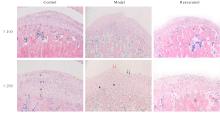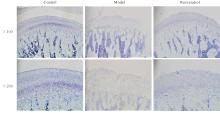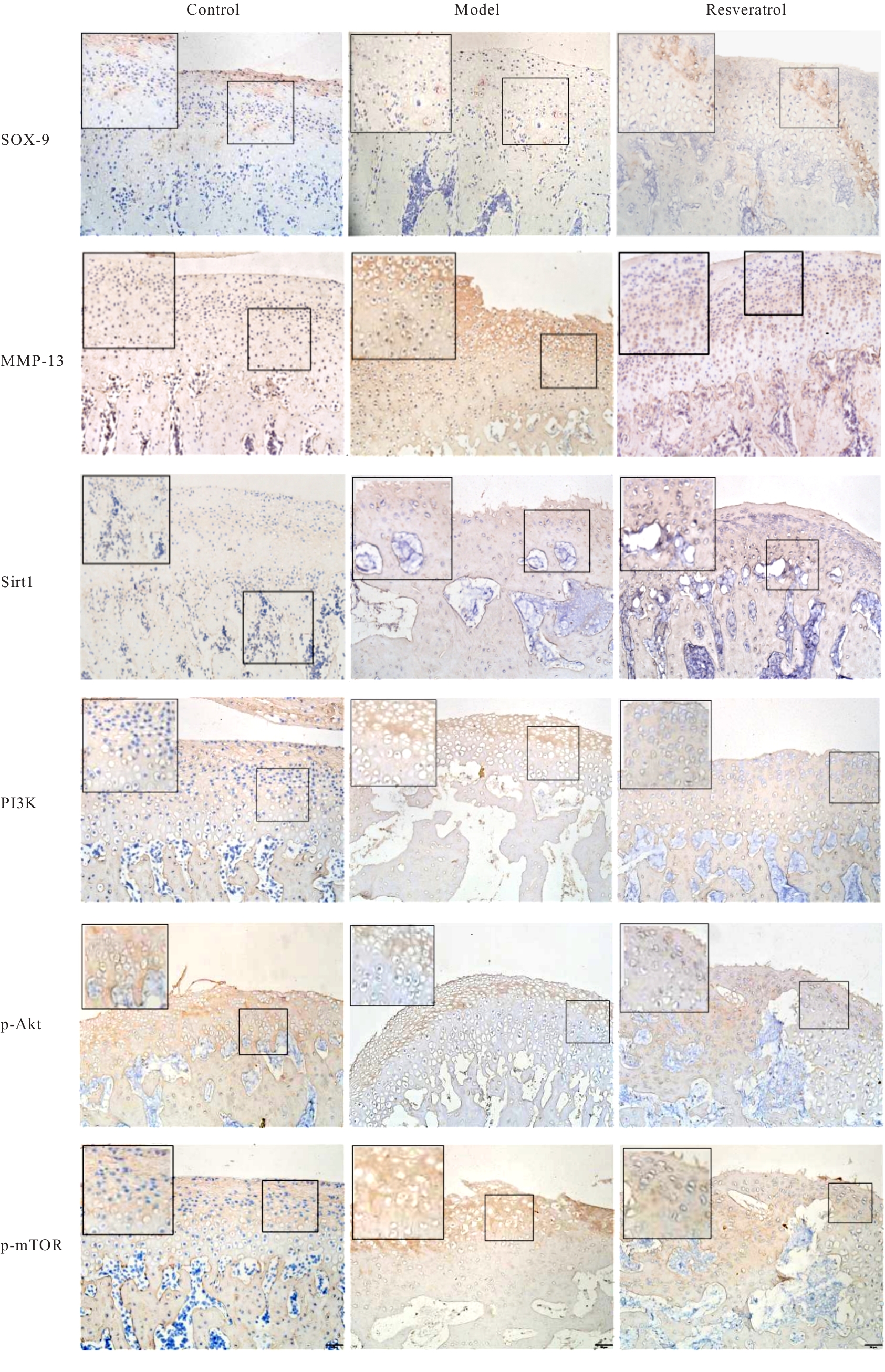| 1 |
STOCUM D L, ROBERTS W E. Part Ⅰ: development and physiology of the temporomandibular joint[J]. Curr Osteoporos Rep, 2018, 16(4): 360-368.
|
| 2 |
LEE W S, KIM H J, KIM K I, et al. Intra-articular injection of autologous adipose tissue-derived mesenchymal stem cells for the treatment of knee osteoarthritis: a phase Ⅱb, randomized, placebo-controlled clinical trial[J]. Stem Cells Transl Med, 2019, 8(6): 504-511.
|
| 3 |
HAMERMAN D. The biology of osteoarthritis[J]. N Engl J Med, 1989, 320(20): 1322-1330.
|
| 4 |
ZHAO Y, GAN Y H. Combination of hyperlipidemia and 17β-Estradiol induces TMJOA-like pathological changes in rats[J]. Oral Dis, 2023, 29(8): 3640-3653.
|
| 5 |
STOUSTRUP P, Therapy TWILT M.. Intra-articular steroids for TMJ arthritis: caution needed[J]. Nat Rev Rheumatol, 2015, 11(10): 566-567.
|
| 6 |
ENGLUND M, ROOS E M, LOHMANDER L S. Impact of type of meniscal tear on radiographic and symptomatic knee osteoarthritis: a sixteen-year followup of meniscectomy with matched controls[J]. Arthritis Rheum, 2003, 48(8): 2178-2187.
|
| 7 |
ZHANG S P, YAP A U J, TOH W S. Stem cells for temporomandibular joint repair and regeneration[J]. Stem Cell Rev Rep, 2015, 11(5): 728-742.
|
| 8 |
BIASUTTO L, MATTAREI A, AZZOLINI M, et al. Resveratrol derivatives as a pharmacological tool[J]. Ann N Y Acad Sci, 2017, 1403(1): 27-37.
|
| 9 |
KURŠVIETIENĖ L, STANEVIČIENĖ I, MONGIRDIENĖ A, et al. Multiplicity of effects and health benefits of resveratrol[J]. Medicina, 2016, 52(3): 148-155.
|
| 10 |
LIN T C, LIN J N, YANG I H, et al. The combination of resveratrol and Bletilla striata polysaccharide decreases inflammatory markers of early osteoarthritis knee and the preliminary results on LPS-induced OA rats[J]. Bioeng Transl Med, 2022, 8(4): e10431.
|
| 11 |
LONG Z Y, XIANG W, LI J, et al. Exploring the mechanism of resveratrol in reducing the soft tissue damage of osteoarthritis based on network pharmacology and experimental pharmacology[J]. Evid Based Complementary Altern Med, 2021, 2021: 9931957.
|
| 12 |
ZHOU Z Q, DENG Z H, LIU Y W, et al. Protective effect of SIRT1 activator on the knee with osteoarthritis[J]. Front Physiol, 2021, 12: 661852.
|
| 13 |
YUCE P, HOSGOR H, RENCBER S F, et al. Effects of intra-articular resveratrol injections on cartilage destruction and synovial inflammation in experimental temporomandibular joint osteoarthritis[J]. J Oral Maxillofac Surg, 2021, 79(2): 344.e1-344.e12.
|
| 14 |
IZAWA T, HUTAMI I R, TANAKA E. Potential role of rebamipide in osteoclast differentiation and mandibular condylar cartilage homeostasis[J]. Curr Rheumatol Rev, 2018, 14(1): 62-69.
|
| 15 |
LEI J, HAN J H, LIU M Q, et al. Degenerative temporomandibular joint changes associated with recent-onset disc displacement without reduction in adolescents and young adults[J]. J Cranio Maxillo Facial Surg, 2017, 45(3): 408-413.
|
| 16 |
YI H, ZHANG W, CUI Z M, et al. Resveratrol alleviates the interleukin-1β-induced chondrocytes injury through the NF-κB signaling pathway[J]. J Orthop Surg Res, 2020, 15(1): 424.
|
| 17 |
LI M, YUAN Z P, YU F, et al. Microfluidic-based screening of resveratrol and drug-loading PLA/Gelatine nano-scaffold for the repair of cartilage defect[J]. Artif Cells Nanomed Biotechnol, 2018, 46(sup1): 336-346.
|
| 18 |
褚云峰, 于红燕, 杨 琪, 等. 白藜芦醇在骨关节炎中的作用及机制研究进展[J]. 中国骨质疏松杂志, 2022, 28(9): 1351-1355.
|
| 19 |
CORBI G, CONTI V, SCAPAGNINI G, et al. Role of sirtuins, calorie restriction and physical activity in aging[J]. Front Biosci (Elite Ed), 2012, 4(2): 768-778.
|
| 20 |
YACOUB R, LEE K, HE J C. The role of SIRT1 in diabetic kidney disease[J]. Front Endocrinol, 2014, 5: 166.
|
| 21 |
FENG K, CHEN Z X, LIU P C, et al. Quercetin attenuates oxidative stress-induced apoptosis via SIRT1/AMPK-mediated inhibition of ER stress in rat chondrocytes and prevents the progression of osteoarthritis in a rat model[J]. J Cell Physiol, 2019, 234(10): 18192-18205.
|
| 22 |
XUE J F, SHI Z M, ZOU J, et al. Inhibition of PI3K/AKT/mTOR signaling pathway promotes autophagy of articular chondrocytes and attenuates inflammatory response in rats with osteoarthritis[J]. Biomed Pharmacother, 2017, 89: 1252-1261.
|
| 23 |
ZHANG Y, VASHEGHANI F, LI Y H, et al. Cartilage-specific deletion of mTOR upregulates autophagy and protects mice from osteoarthritis[J]. Ann Rheum Dis, 2015, 74(7): 1432-1440.
|
| 24 |
XU Z R, HAN X, OU D M, et al. Targeting PI3K/AKT/mTOR-mediated autophagy for tumor therapy[J]. Appl Microbiol Biotechnol, 2020, 104(2): 575-587.
|
| 25 |
MARIÑO G, MORSELLI E, BENNETZEN M V, et al. Longevity-relevant regulation of autophagy at the level of the acetylproteome[J]. Autophagy, 2011, 7(6): 647-649.
|
 )
)















